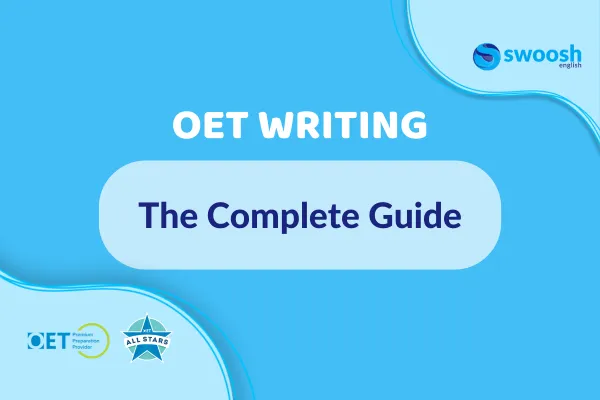Want to pass your OET exam faster?
Blog
Dive into our OET, IELTS or PTE blogs full of tips and strategies so you can achieve your goal of passing your exam with confidence.


Enhance Your OET Listening Part B Score with These 4 Effective Strategies
Struggling with multiple-choice questions in Parts B and C of the OET Listening test is a common challenge faced by many students. Mastering these questions is crucial as they carry significant weight in your final exam score.
In this article, we will share four proven strategies to improve your performance in OET Listening Part B. While the focus is on Part B, these strategies can also benefit your approach to Part C of the exam.
1. Read the Questions Carefully Before Listening
Let's address the most fundamental yet often overlooked aspect first: reading all the questions carefully before listening. Despite its straightforward logic, many students tend to skip this crucial step. Let's consider an example of a typical OET question:
You hear a school nurse briefing staff about a new policy.
The information she wants them to communicate to students relates to:
Checking food ingredients
Sharing food during breaks
Carrying medical equipment
You might have read the question, but have you read it meticulously? You should be able to answer the following:
Who will be speaking?
Whom are they addressing?
How many individuals are likely involved in the interaction? (Is it a one-way briefing or more interactive?)
What is the purpose of the interaction?
Answers:
A school nurse
Staff
Just one person, as she is addressing a group who cannot respond to her briefing simultaneously
She is providing information about a new policy that she wants the staff to convey to students
Could you successfully answer these questions? Doing so prepares you to focus on the upcoming information more effectively. Remember, you only get to hear the information once, so being well-prepared is crucial.
2. Determine the Listening Skill Required
Now we need to consider meta-skills; your ability to discern the types of listening skills that OET exam questions assess. In OET Listening Part B, you'll encounter questions that evaluate both gist and detail/listener course of action.
A gist question aims to assess your understanding of the overall listening text, such as its purpose or general focus. On the other hand, a detail/listener course of action question requires you to identify a more detailed aspect of the listening text.
Successful execution of this task goes beyond merely catching a specific word or phrase - we'll discuss this further shortly. Let's revisit the previous question. What skill do you think it is evaluating?
You hear a school nurse briefing staff about a new policy.
The information she wants them to communicate to students relates to:
Checking food ingredients
Sharing food during breaks
Carrying medical equipment
It is evident that the question is testing for detail/listener course of action. You must listen attentively for the precise detail that the nurse intends her staff to convey to students. Now that you've identified the required skill, you can concentrate on scrutinising the listening text for the specific details you need to hear mentioned.
Conversely, a gist question might look something like this:
You hear an ophthalmologist during a consultation with a patient.
Which statement best sums up the ophthalmologist’s diagnosis?
The patient is suffering from a historic condition.
The patient has an irreversible degenerative condition.
The patient has had their condition diagnosed at a manageable stage.
In this scenario, you are tasked with summarising the information provided by the ophthalmologist. Consequently, you'll need to listen attentively throughout the interaction, picking up on contextual clues where applicable (such as references to time, general statements conveying positivity or negativity related to the condition) to answer the question accurately.
3. Be Prepared to Listen for the Message
In OET Listening, you should expect to hear paraphrasing. It is possible that none of the words from the multiple-choice options will be used in the actual recording, so careful listening is crucial to make the correct selection.
For instance, if the answer to the previous question was C, you might hear the doctor say something like "It is still possible to treat your symptoms," which indirectly points to option C despite none of its words being directly used. This is because in Parts B and C, the focus is on grasping the message conveyed in the recording rather than specific words.
4. Don’t Get Distracted
Incorrect options in multiple-choice questions are called distractors for a reason - they aim to divert your attention from the correct answer. These distractors may include words heard in the text but do not align with the speakers' intentions.
For example, considering the previous again, if you hear "the condition is degenerative if untreated," choosing option B based on this would be incorrect. The phrase "if untreated" suggests the degeneration is not irreversible, contradicting option B's statement. Stay vigilant to avoid falling for such distractions and accurately interpret the message conveyed in the recording.
If you follow the strategies outlined in this article, you’ll be on track for a high score in your OET Listening test. Remember, it is essential that you get plenty of practice developing your skills in mock exams and under the guidance of an expert OET teacher.
You are invited to a FREE Masterclass
with expert teacher Scott!
Discover essential exam strategies
& learn how to save $1000s on your exam preparation.

